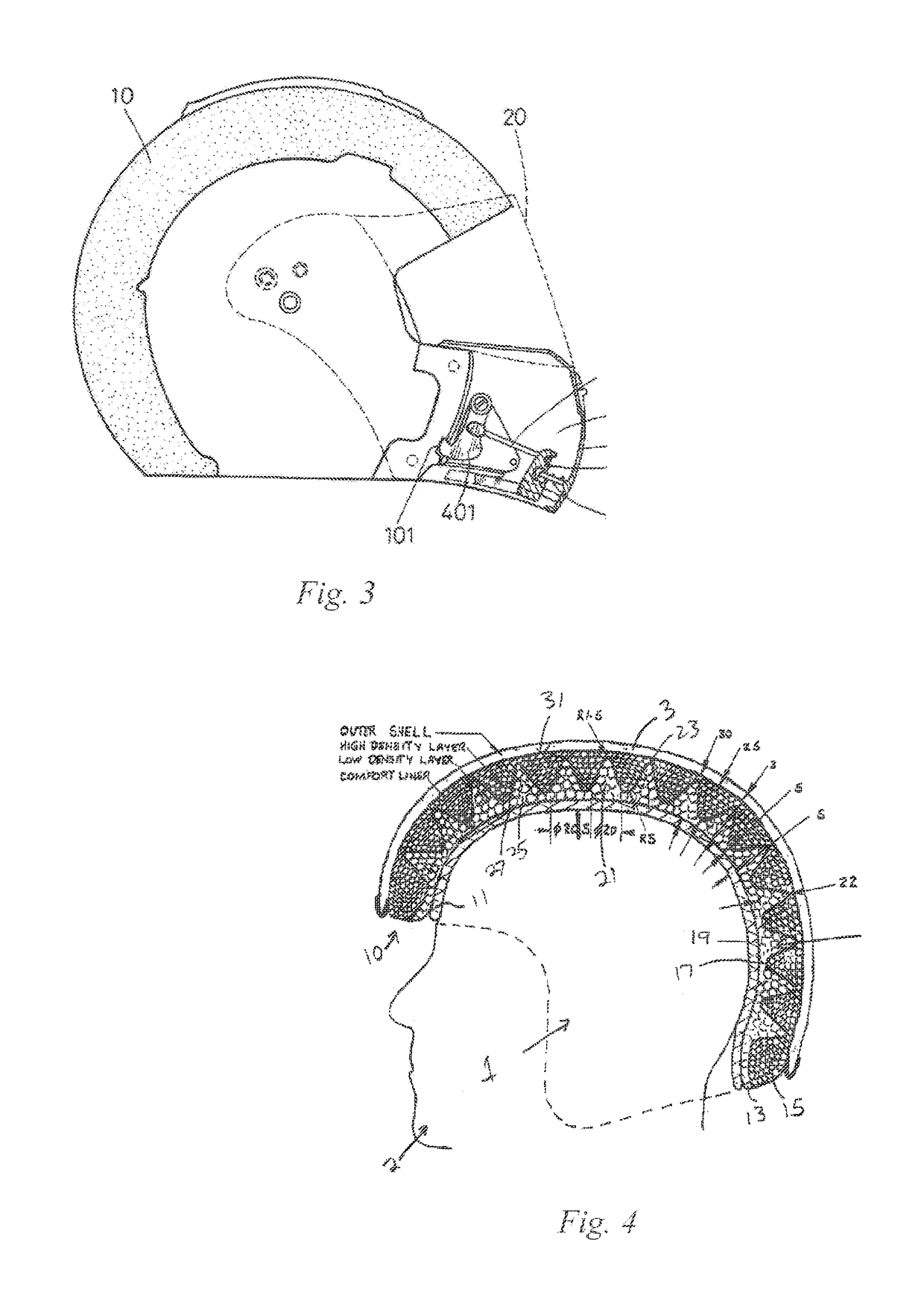Improvements to Skull Protection Cell
a protection cell and skull technology, applied in the field of skull protection cells, can solve the problems of diffuse axonal injury, severe sequelae, and limited skull, and achieve the effect of improving the protection effect, reducing the risk of fracture, and reducing the safety of skull structures
- Summary
- Abstract
- Description
- Claims
- Application Information
AI Technical Summary
Benefits of technology
Problems solved by technology
Method used
Image
Examples
Embodiment Construction
[0070]Referring now to FIG. 6-A, the absorbent means used in the invention comprise a first layer (21) of rigid or semi-rigid polyurethane foam of closed cells having a thickness of between 18 mm and 28 mm, a thickness of approximately 23 mm being preferably used. The density of this material varies between 40 and 85 kg / m3, preferably adopting an approximate value of 45 kg / m3 and its mechanical resistance to compression varies between 120 kPa and 200 kPa. The number of cells per cm3 and mechanical strength may vary. The invention is not restricted to the cited material, and equivalent materials with similar characteristics of density and mechanical behavior may be used.
[0071]In the impact, the head, compressing this layer, causes the collapse of the cells with consequent absorption of energy and increase of the time of impact, with permanent deformation, unlike the EPS, a fundamental function to prevent traumatic brain injury.
[0072]FIG. 6-A further shows the second layer 22, located...
PUM
 Login to View More
Login to View More Abstract
Description
Claims
Application Information
 Login to View More
Login to View More - Generate Ideas
- Intellectual Property
- Life Sciences
- Materials
- Tech Scout
- Unparalleled Data Quality
- Higher Quality Content
- 60% Fewer Hallucinations
Browse by: Latest US Patents, China's latest patents, Technical Efficacy Thesaurus, Application Domain, Technology Topic, Popular Technical Reports.
© 2025 PatSnap. All rights reserved.Legal|Privacy policy|Modern Slavery Act Transparency Statement|Sitemap|About US| Contact US: help@patsnap.com



